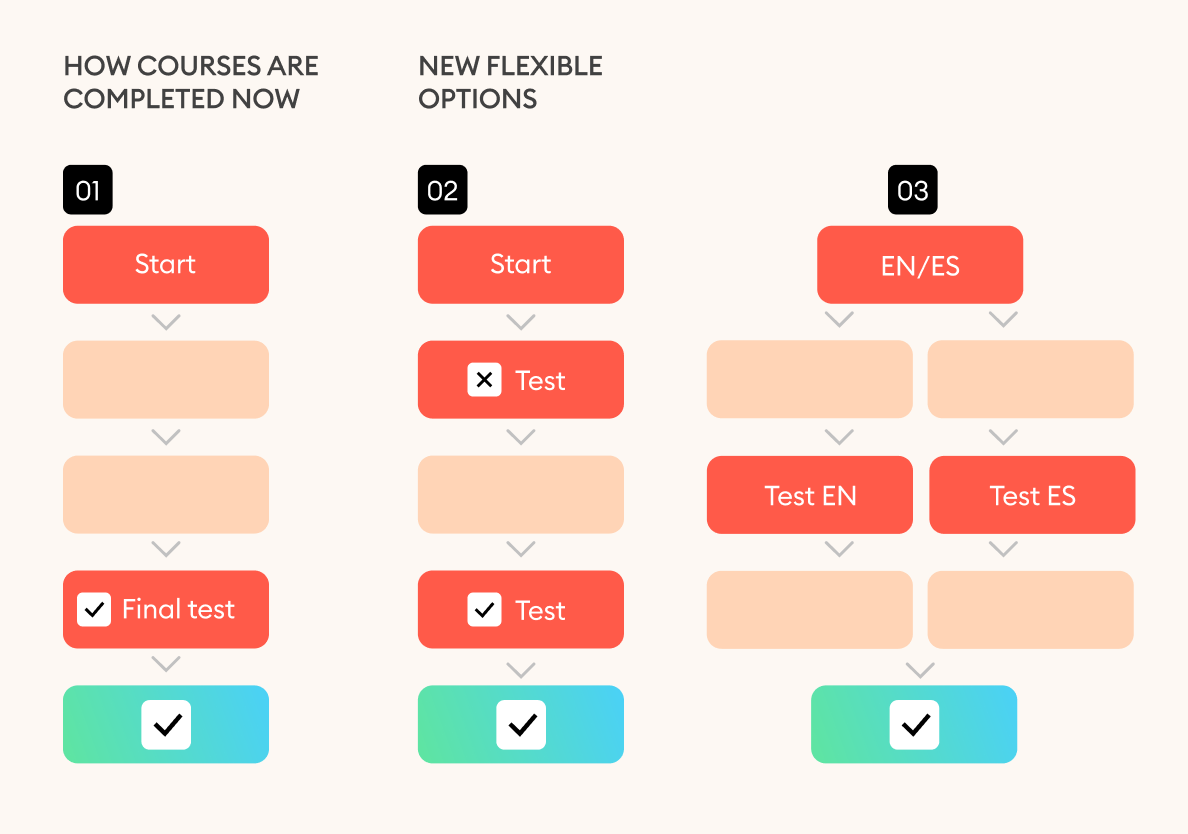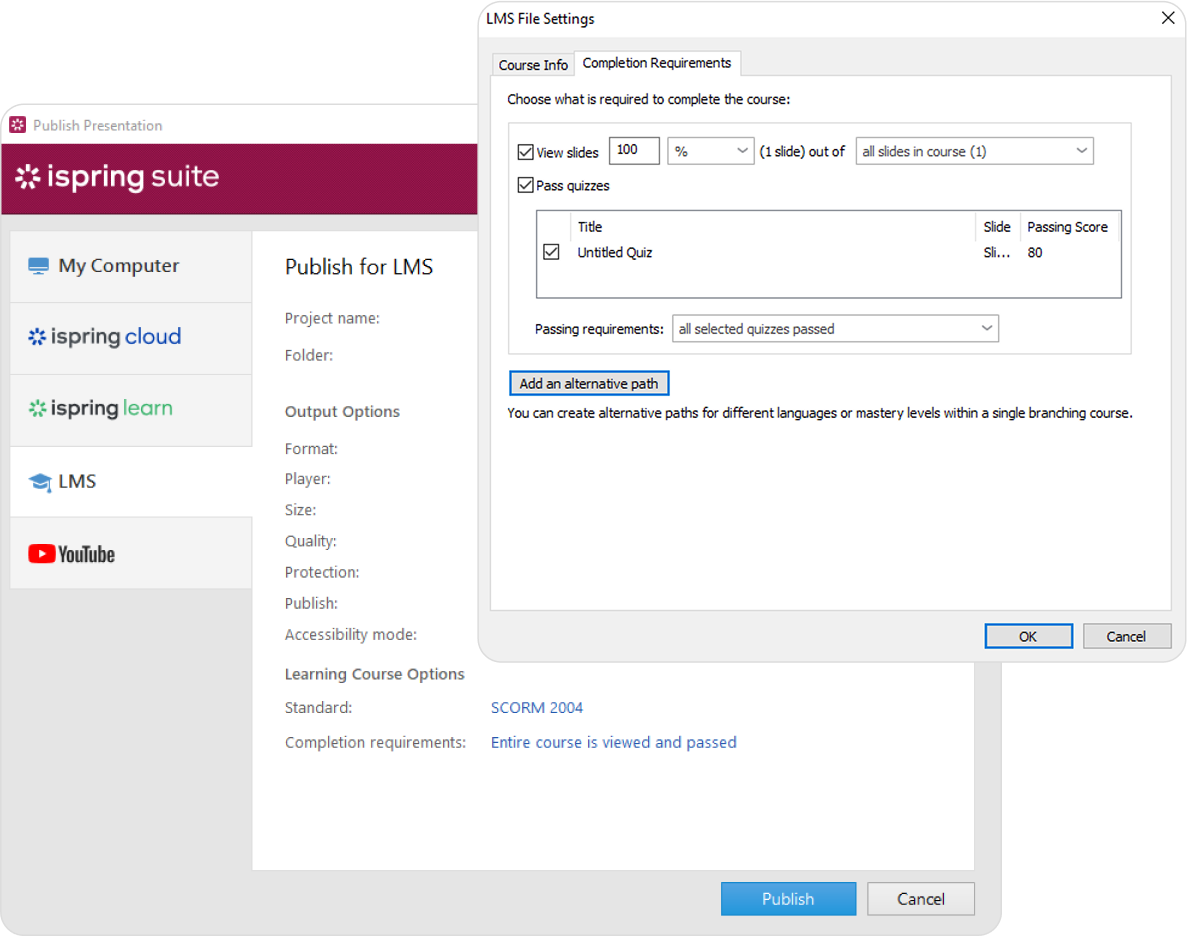Take Full Control of Quiz Scoring in iSpring Suite [February Update]

If you use quizzes in iSpring Suite, you’ll love our latest update — course completion and grading settings just got a major upgrade! You now have even more flexibility in assessing learners’ knowledge.
In this article, we’ll break down all the new capabilities in detail, so you could make the most of them in your eLearning projects.
What’s New in iSpring Suite’s Quiz Scoring
Imagine you have a course in your catalog that’s purely for reference — no mandatory tests, no strict completion criteria. Previously, if a learner opened the course but didn’t finish it, it remained marked as “incomplete,” affecting your stats. Now, you can adjust the settings so that someone is considered complete as long as they access the course, even if they don’t go through every slide or take a quiz.
You can also require learners to view specific slides before a course is marked as complete, making sure key content isn’t skipped.
Additionally, if your course includes multiple quizzes — some for practice, some for final assessment — you can now decide which ones count toward the final score and which don’t affect the grade.
On top of that, we’ve also added branch-based evaluation, which is a game-changer! Now, you can group slides and quizzes into different learning paths within a single module. If your course is available in multiple languages, learners can pick their preferred language right away, go through the right version of the course, and have their progress tracked separately.
The same applies if your course covers multiple product brands — each section can have its own quizzes and completion rules.

Design learning materials for every team and evaluate them within specific course branches.
Let’s go over the changes once again to make everything crystal clear:
| Before | Now |
|---|---|
| All slides were graded. | You can now mark slides as ungraded. |
| Learners could complete a course without going through all required materials, as they could reach the passing score by accumulating points from other content. | A course is only marked as completed when all required materials have been viewed and all required quizzes or tests have been passed. |
| A course was considered completed when the learner reached the overall passing score (%). | Since slides are no longer graded, the passing score now applies only to quizzes and graded simulations. You can decide when a course is marked as complete: 1) when the learner reaches the overall passing score, 2) or when they pass every required test individually. |
| When a test had multiple attempts, the “Passed/Failed” status was assigned after the first attempt. | Now, “Passed” appears only after the first successful attempt, while “Failed” appears only when all attempts have been used. Until then, the status remains “Not Started.” |
| Slide completion tracking could only be set based on the number of slides viewed. | Slide completion tracking can now be set by slide count or percentage (rounded up — for example, if a course has six slides and requires 80% completion, five slides must be viewed). |
| You could customize the maximum score for a course. | The maximum score is now always set to 100. |
Important:
- Hidden slides don’t count toward the total slide number and don’t affect progress tracking.
- Surveys and ungraded simulations still don’t contribute to the passing score, but they do affect course progress. If marked as required, the course won’t be completed until they’re finished.
How This Update Helps You
 Let employees get certified faster
Let employees get certified faster
Employees don’t have time for courses that aren’t relevant to their skills or don’t help them solve real-world challenges. Now, you can give them a choice: take a test right away to complete the course or go through the materials first and take the final test later. Those who are already familiar with the subject can skip unnecessary slides and get certified faster.
 More accurate knowledge checks
More accurate knowledge checks
To prevent situations where learners can fail one test but still pass overall, you can now require them to meet the passing score on every critical assessment. This will ensure they truly understand each section before moving forward.
 Smarter evaluation for adaptive courses
Smarter evaluation for adaptive courses
With branching scenarios, you no longer need to create complex structures, hide slides, or create two different courses. Learners will only see the content that applies to them. This is especially useful for multilingual courses and training programs where users choose between different products.

 Detailed statistics for each course module
Detailed statistics for each course module
When a course covers multiple modules on different topics, you can now track learner progress for each module separately. For example, if you’re training employees on marketing channels, you’ll see exactly how well they understand email marketing, social media, and PPC campaigns. This also applies to multilingual courses, helping you analyze performance by language.
Try The New Quiz Scoring Rules for Yourself
All these updates are already available in your iSpring Suite subscription — go check them out!
New to iSpring Suite? Sign up for a free 14-day trial and see how quickly you can create meaningful online assessments.
 Let employees get certified faster
Let employees get certified faster


